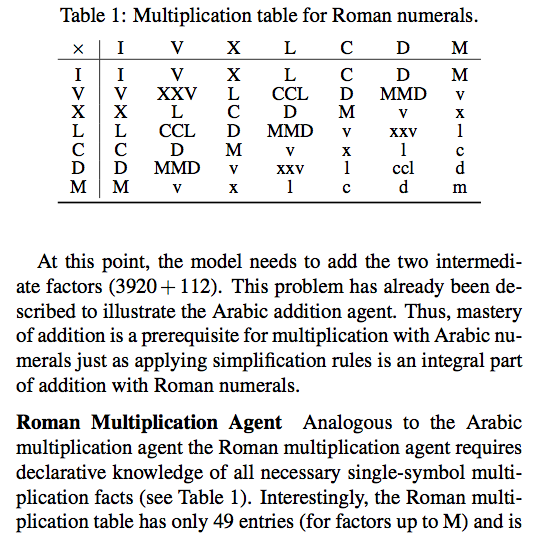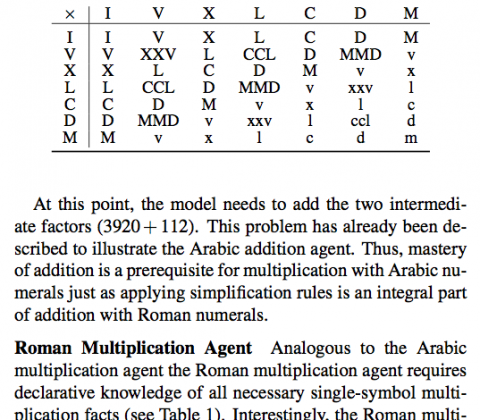

Paper: Arithmetic with Arabic vs. Roman numerals
| … how information is represented can greatly affect how easy it is to do different things with it. (…) it is easy to add, to subtract, and even to multiply if the Arabic or binary representations are used, but it is not at all easy to do these things — especially multiplication — with Roman numerals. This is a key reason why the Roman culture failed to develop mathematics in the way the earlier Arabic cultures had. |
| D Marr (1982): Vision, p. 21 |
Dirk Schlimm, Hansjörg Neth
Modeling ancient and modern arithmetic practices: Addition and multiplication with Arabic and Roman numerals
Abstract: To analyze the task of mental arithmetic with external representations in different number systems we model algorithms for addition and multiplication with Arabic and Roman numerals. This demonstrates that Roman numerals are not only informationally equivalent to Arabic ones but also computationally similar — a claim that is widely disputed. An analysis of our models’ elementary processing steps reveals intricate trade-offs between problem representation, algorithm, and interactive resources. Our simulations allow for a more nuanced view of the received wisdom on Roman numerals. While symbolic computation with Roman numerals requires fewer internal resources than with Arabic ones, the large number of needed symbols inflates the number of external processing steps.
Keywords: Numeral systems, mental arithmetic, algorithms, mathematical practice, representation, notation, immediate interactive behavior (IIB)
Reference: Schlimm, D., & Neth, H. (2008). Modeling ancient and modern arithmetic practices: Addition and multiplication with Arabic and Roman numerals. In V. Sloutsky, B. Love & K. McRae (Eds.), Proceedings of the 30th Annual Meeting of the Cognitive Science Society (pp. 2097–2102). Austin, TX: Cognitive Science Society.
Related: The cognitive basis of arithmetic | Interactive addition | Thinking by doing | Interactive coin addition | Arithmetic with Arabic vs. Roman numerals | Immediate interactive behavior | A taxonomy of practical vs. theoretical actions
Resources: Download PDF | Google Scholar
Comments are Disabled